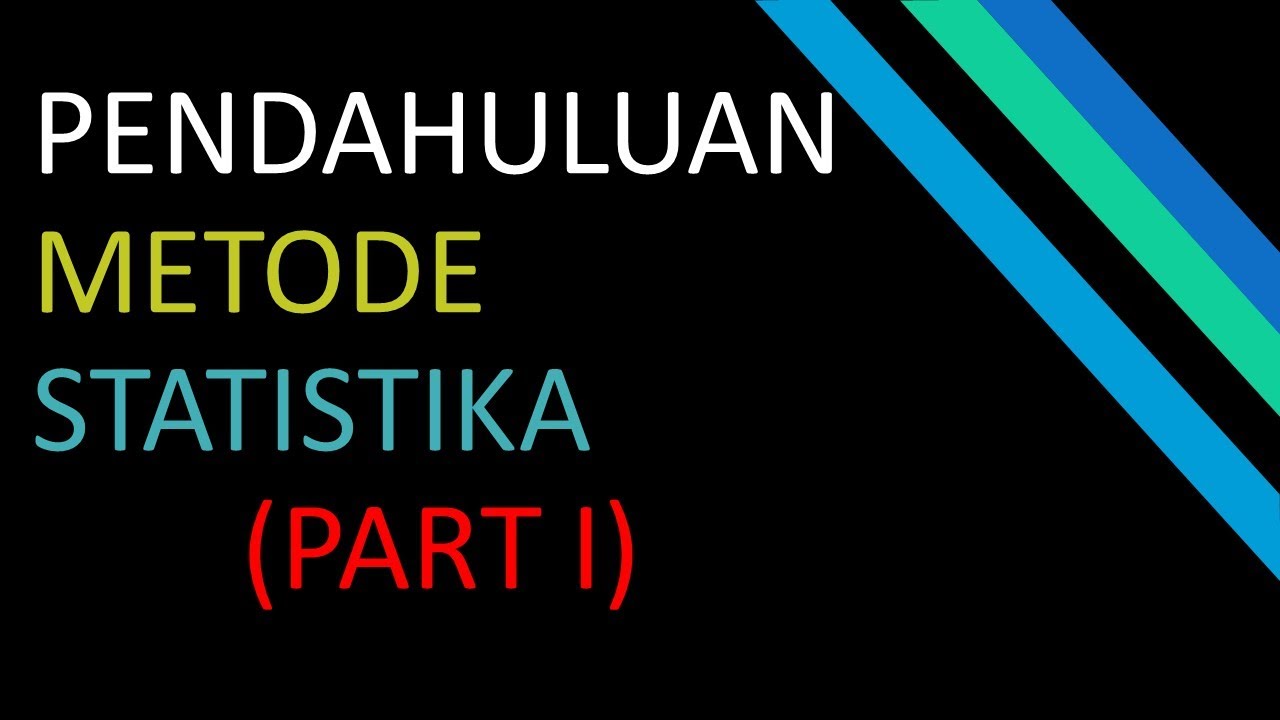BASIC CONCEPTS IN STATISTICS || MATHEMATICS IN THE MODERN WORLD
Summary
TLDRThis educational video delves into the fundamentals of statistics, explaining it as a methodical approach to gather, organize, analyze, and interpret data to draw conclusions. It covers key statistical terms such as 'data', 'variable', 'population', and 'sample', and distinguishes between qualitative and quantitative variables. The video further explores different levels of measurement, including nominal, ordinal, interval, and ratio levels, and outlines four sampling methods: random, systematic, stratified, and cluster sampling. The presenter encourages viewers to engage with the content and look forward to more educational videos.
Takeaways
- 📊 Statistics is a methodical approach for planning experiments, collecting data, and analyzing it to draw conclusions.
- 🔍 Data collection involves gathering information from a population, which is the entire set of subjects under study.
- 📈 Organizing data into tables, graphs, or charts is essential for deriving logical statistical conclusions.
- 🔎 Analysis in statistics is the process of deducing information from data to formulate numerical descriptions.
- 📝 Interpretation is about deriving conclusions and making predictions based on analyzed data.
- 📚 Variables are characteristics that can be observed or measured in each unit of a population.
- 🌐 Population refers to the complete set of all possible values that a variable can take.
- 👥 A sample is a subset of the population, chosen for practical reasons or to represent the population.
- 🔤 Qualitative variables represent categories or classes, such as gender or religion.
- 🔢 Quantitative variables represent amounts or counts, like height or weight, and can be discrete or continuous.
- 🔬 There are four levels of measurement: nominal, ordinal, interval, and ratio, each with distinct properties and uses.
- 🎯 Sampling methods include random, systematic, stratified, and cluster sampling, each suitable for different study designs.
Q & A
What is the definition of statistics as mentioned in the video?
-Statistics is defined as a collection of methods for planning experiments, obtaining data, and then analyzing, interpreting, and drawing conclusions based on the data.
What are the key processes involved in statistics according to the video?
-The key processes involved in statistics are gathering relevant information from the population, organizing data into tables, graphs, or charts, analyzing the data to deduce relevant information, and interpreting the data to derive conclusions or make predictions.
What is meant by 'data' in the context of statistics?
-In statistics, 'data' refers to the values that variables can assume, where a variable is a characteristic that is observable or measurable in every unit of the population.
How is 'population' defined in the video?
-The 'population' is defined as the set of all possible values of variables.
What is a 'sample' in statistics?
-A 'sample' is a subgroup or subset of the population, which is used to represent the larger population for the purpose of study.
What are the two classifications of variables discussed in the video?
-The two classifications of variables are qualitative variables, which represent classes or categories, and quantitative variables, which represent amounts or counts.
Can you explain the difference between discrete and continuous quantitative variables?
-Discrete quantitative variables are data that can be counted, such as the number of days or siblings. Continuous quantitative variables can assume all values between any two specific values, such as weight or height.
What are the four levels of measurement mentioned in the video?
-The four levels of measurement are nominal, ordinal, interval, and ratio levels. Nominal involves names or labels, ordinal involves ordered data, interval includes meaningful differences between data, and ratio has a meaningful absolute zero point.
What is random sampling, as described in the video?
-Random sampling is a method where each member of the population has an equal chance of being selected, often done using chance or random numbers.
How is systematic sampling different from random sampling?
-Systematic sampling involves numbering the subjects of the population and then selecting members at regular intervals, such as every tenth person, rather than using random selection.
What is stratified sampling and when is it used?
-Stratified sampling is used when the population has distinct groups. The population is divided into these groups, and then random samples are taken from each stratum or group.
Can you describe cluster sampling as mentioned in the video?
-Cluster sampling uses intact groups, called clusters, as the primary sampling unit. This method is useful when the population is naturally divided into groups that can be treated as individual units for sampling purposes.
Outlines

Dieser Bereich ist nur für Premium-Benutzer verfügbar. Bitte führen Sie ein Upgrade durch, um auf diesen Abschnitt zuzugreifen.
Upgrade durchführenMindmap

Dieser Bereich ist nur für Premium-Benutzer verfügbar. Bitte führen Sie ein Upgrade durch, um auf diesen Abschnitt zuzugreifen.
Upgrade durchführenKeywords

Dieser Bereich ist nur für Premium-Benutzer verfügbar. Bitte führen Sie ein Upgrade durch, um auf diesen Abschnitt zuzugreifen.
Upgrade durchführenHighlights

Dieser Bereich ist nur für Premium-Benutzer verfügbar. Bitte führen Sie ein Upgrade durch, um auf diesen Abschnitt zuzugreifen.
Upgrade durchführenTranscripts

Dieser Bereich ist nur für Premium-Benutzer verfügbar. Bitte führen Sie ein Upgrade durch, um auf diesen Abschnitt zuzugreifen.
Upgrade durchführenWeitere ähnliche Videos ansehen

Konsep Dasar Statistik Pendidikan

Pengantar Statistika Kelas 7 SMP

Penyajian Data (Part-1) ~ Tabel dan Diagram (Materi PJJ Kelas VII / 7 SMP)

[PART 1] KONSEP DASAR STATISTIKA INFERENSIA

Pendahuluan Metode Penelitian Part I

How to Tally, Encode, and Analyze your Data using Microsoft Excel (Chapter 4: Quantitative Research)
5.0 / 5 (0 votes)
